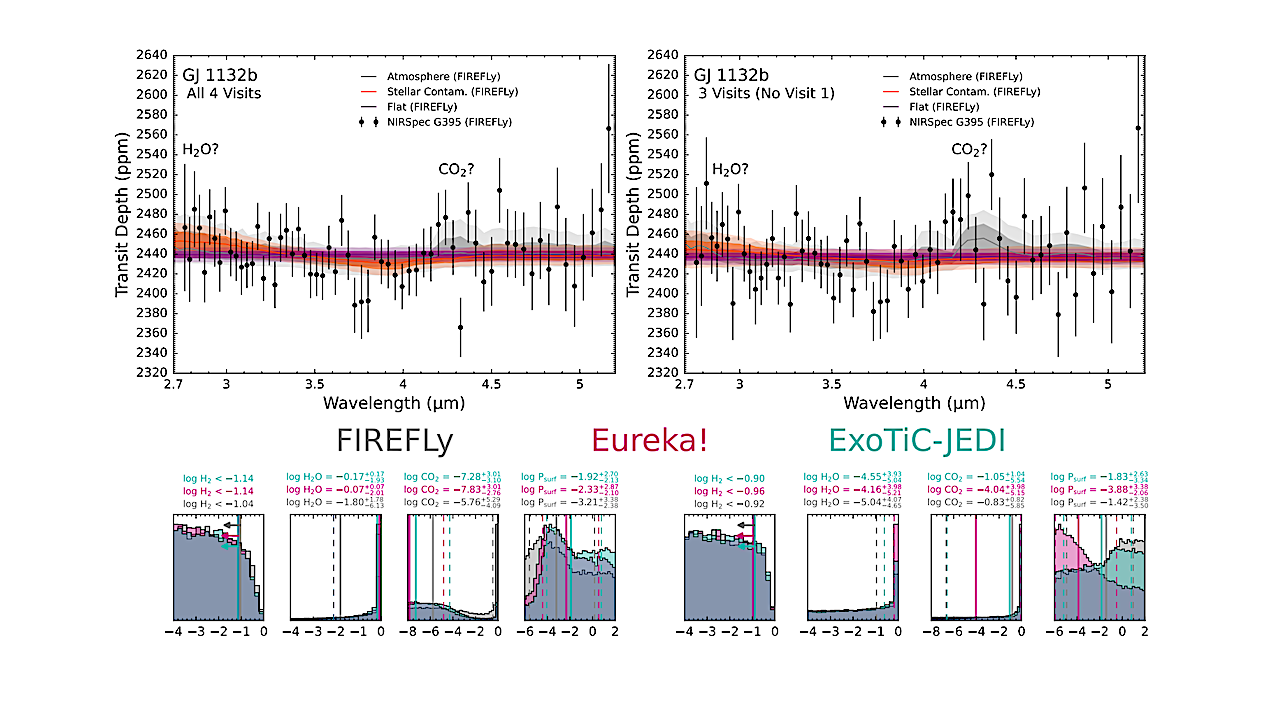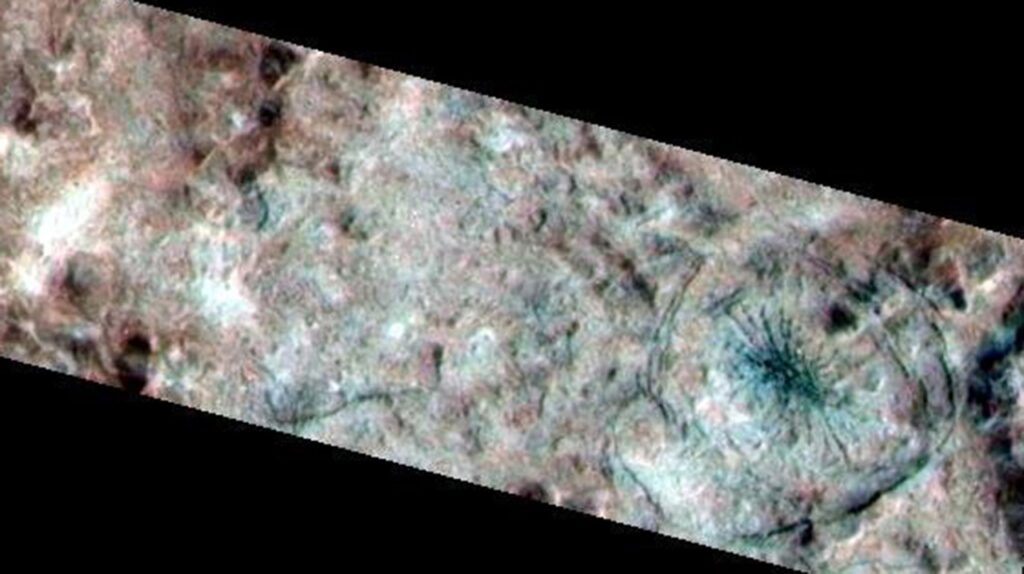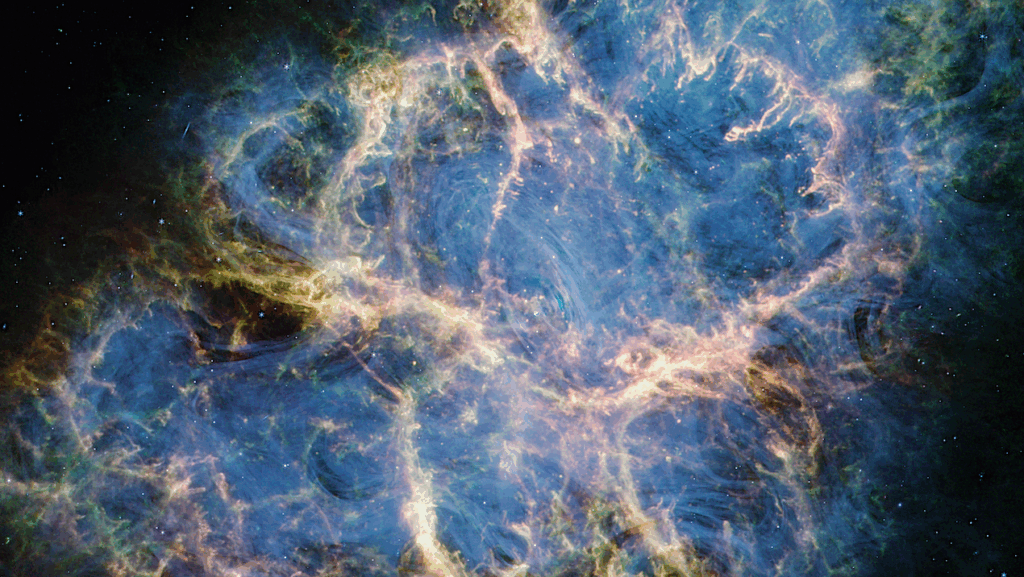Now Reading: Additional JWST/NIRSpec Transits Of The Rocky M Dwarf Exoplanet GJ 1132 b Reveal a Featureless Spectrum
-
01
Additional JWST/NIRSpec Transits Of The Rocky M Dwarf Exoplanet GJ 1132 b Reveal a Featureless Spectrum
Additional JWST/NIRSpec Transits Of The Rocky M Dwarf Exoplanet GJ 1132 b Reveal a Featureless Spectrum


Retrieval results for GJ 1132 b. Top panels: comparison between the retrieved transmission spectra for the FIREFLy reduction with all four visits (left) and for three visits with Visit 1 excluded (right). Three POSEIDON retrieval models are shown: (i) an atmosphere (grey), (ii) stellar contamination (orange), and (iii) a flat line (purple). The corresponding median retrieved spectra (solid lines) and 1σ and 2σ model confidence intervals (dark and light contours) are overlaid. Labels indicate H2O and CO2 absorption bands (neither are detected, but CO2 is allowed by FIREFLy). Bottom panels: atmosphere posterior histograms for the three data reductions: FIREFLy (grey), Eureka! (pink), and ExoTiC-JEDI (cyan). The 4-visit combined analysis weakly favors a thin H2O-rich atmosphere (driven by a short-wavelength slope), but this solution is not favored when Visit 1 is excluded. — astro-ph.EP
As an archetypal M-dwarf rocky exoplanet, GJ 1132 b has a varied history of atmospheric measurements. At 1.13 R⊕, 1.66 M⊕, and 580 K, it orbits a bright, slowly rotating M dwarf in a 1.6-day period, making it a prime target for characterization.
In this study, we combine two JWST NIRSpec/G395H transits previously reported by May and MacDonald et al. 2023 with two new NIRSpec/G395M transits to constrain the presence of an atmosphere.
This marks the first time the G395H and G395M modes have been combined for a single target, and we report no difference in the quality of data between the two modes. For rocky M-dwarf studies, G395H may still be preferred if stacking transits to utilize the high-resolution flux-calibrated stellar spectra and assess evolving stellar heterogeneity. GJ 1132 b’s co-added transmission spectrum is best-fit with a flat line.
A thin steam atmosphere is also consistent with the data, but this interpretation is driven almost entirely by the first transit, which suggests an increase in cool spot coverage-fraction derived from the flux-calibrated stellar spectra.
This demonstrates the importance of always considering stellar heterogeneity evolution in multi-visit transits, and also the importance of a “leave-one-transit-out” approach in modeling efforts of co-added transits.
We combine these results with MIRI/LRS emission data (Xue et al. 2024) to show that together, transmission and emission are consistent with only the thinnest of atmospheres. Given GJ 1132 b’s age and distance from the star, a thin atmosphere is not likely stable. Therefore, the simplest explanation is that GJ 1132 b is indeed a bare rock.
Katherine A. Bennett, Ryan J. MacDonald, Sarah Peacock, Junellie Perez, E. M. May, Sarah E. Moran, Lili Alderson, Jacob Lustig-Yaeger, Hannah R. Wakeford, David K. Sing, Kevin B. Stevenson, Natasha E. Batalha, Mercedes López-Morales, Munazza K. Alam, Joshua D. Lothringer, Guangwei Fu, James Kirk, Jeff A. Valenti, L. C. Mayorga, Kristin S. Sotzen
Comments: Accepted for publication in AJ. Data products available on Zenodo
Subjects: Earth and Planetary Astrophysics (astro-ph.EP)
Cite as: arXiv:2508.10579 [astro-ph.EP] (or arXiv:2508.10579v1 [astro-ph.EP] for this version)
https://doi.org/10.48550/arXiv.2508.10579
Focus to learn more
Related DOI:
https://doi.org/10.3847/1538-3881/adf198
Focus to learn more
Submission history
From: Katherine Bennett
[v1] Thu, 14 Aug 2025 12:16:09 UTC (7,468 KB)
https://arxiv.org/abs/2508.10579
Astrobiology,
Stay Informed With the Latest & Most Important News
Previous Post
Next Post
-
 012024 in Review: Highlights from NASA in Silicon Valley
012024 in Review: Highlights from NASA in Silicon Valley -
 02Panasonic Leica Summilux DG 15mm f/1.7 ASPH review
02Panasonic Leica Summilux DG 15mm f/1.7 ASPH review -
 03How New NASA, India Earth Satellite NISAR Will See Earth
03How New NASA, India Earth Satellite NISAR Will See Earth -
 04And Thus Begins A New Year For Life On Earth
04And Thus Begins A New Year For Life On Earth -
 05Astronomy Activation Ambassadors: A New Era
05Astronomy Activation Ambassadors: A New Era -
06SpaceX launch surge helps set new global launch record in 2024
-
 07From Polymerization-Enabled Folding and Assembly to Chemical Evolution: Key Processes for Emergence of Functional Polymers in the Origin of Life
07From Polymerization-Enabled Folding and Assembly to Chemical Evolution: Key Processes for Emergence of Functional Polymers in the Origin of Life




















